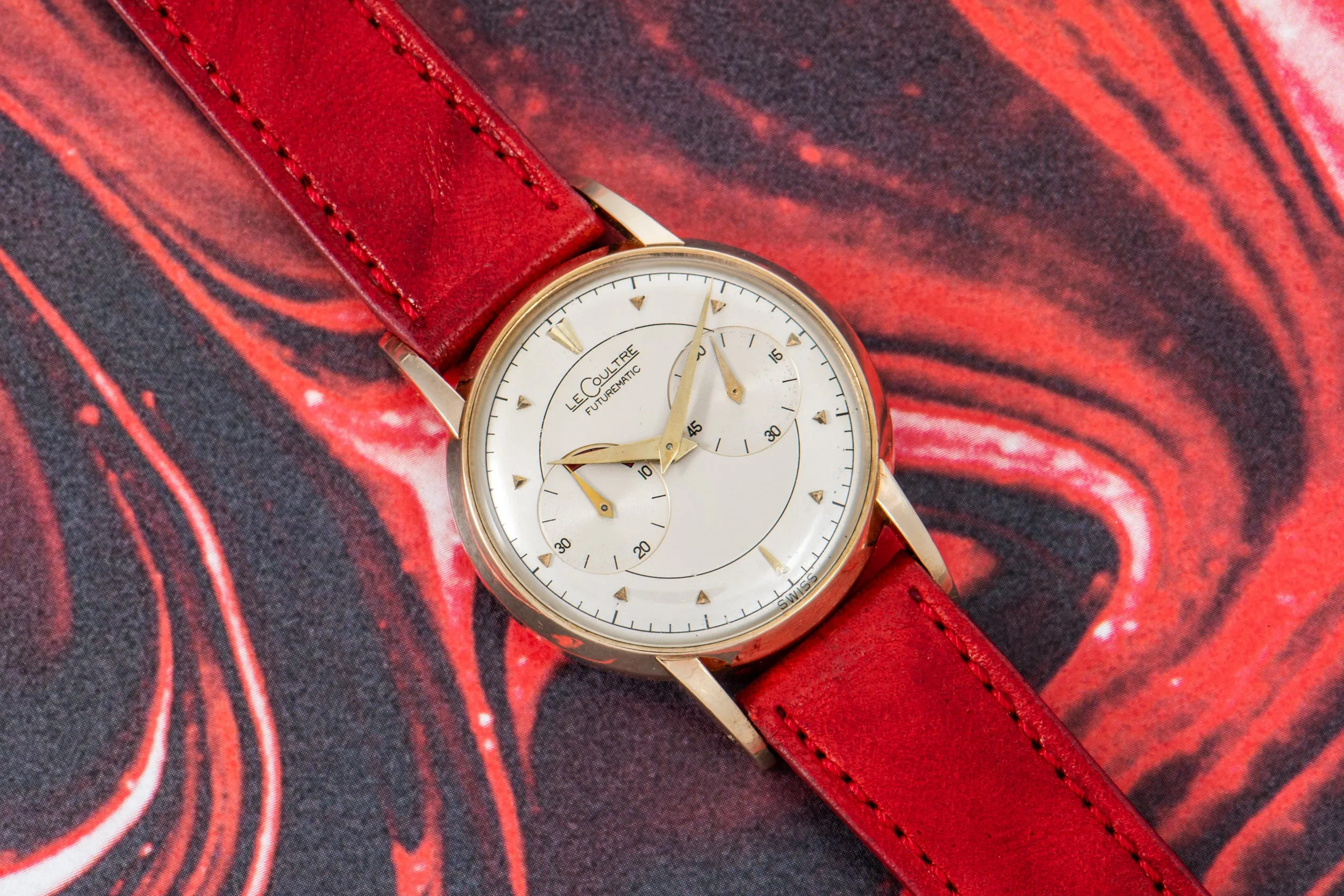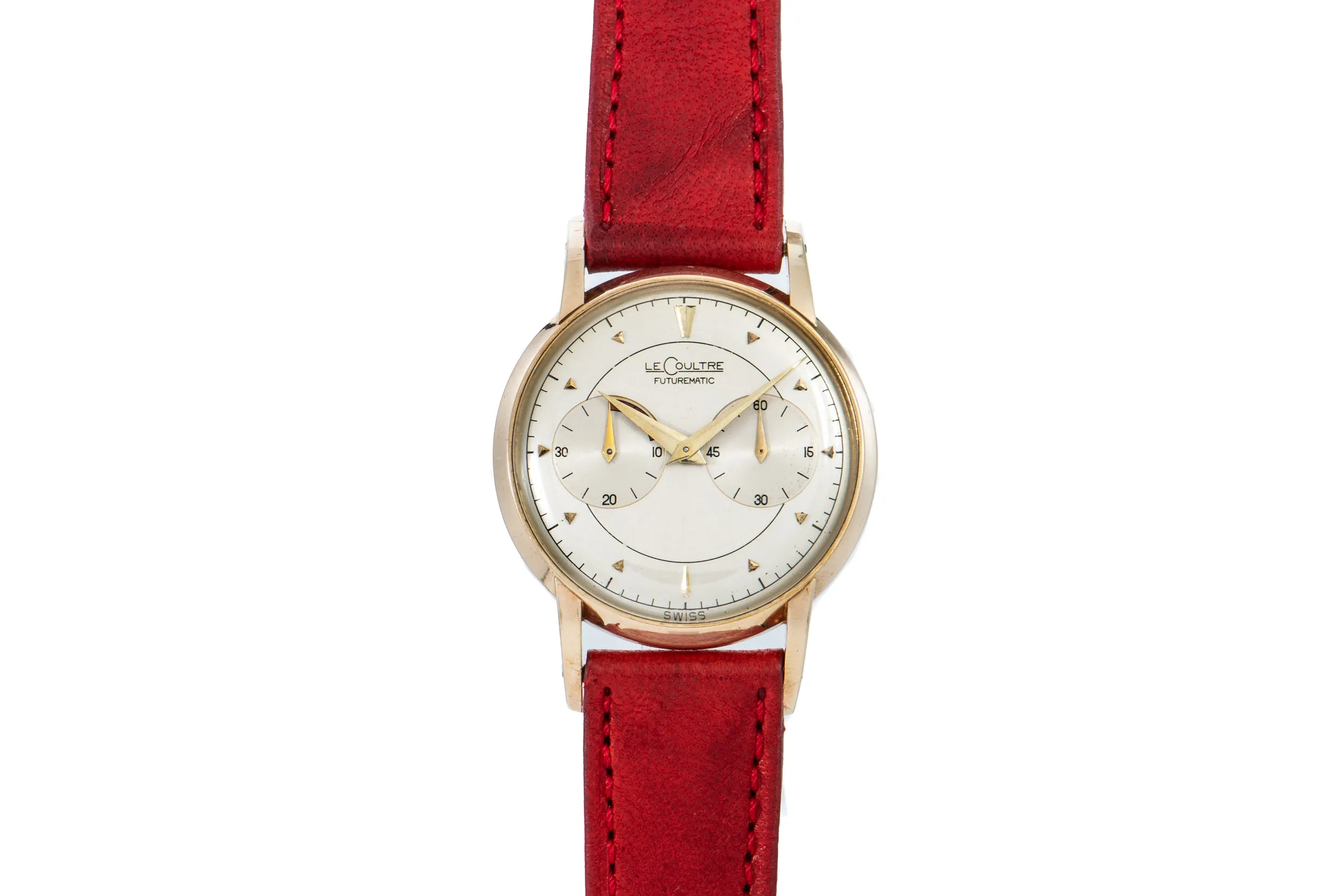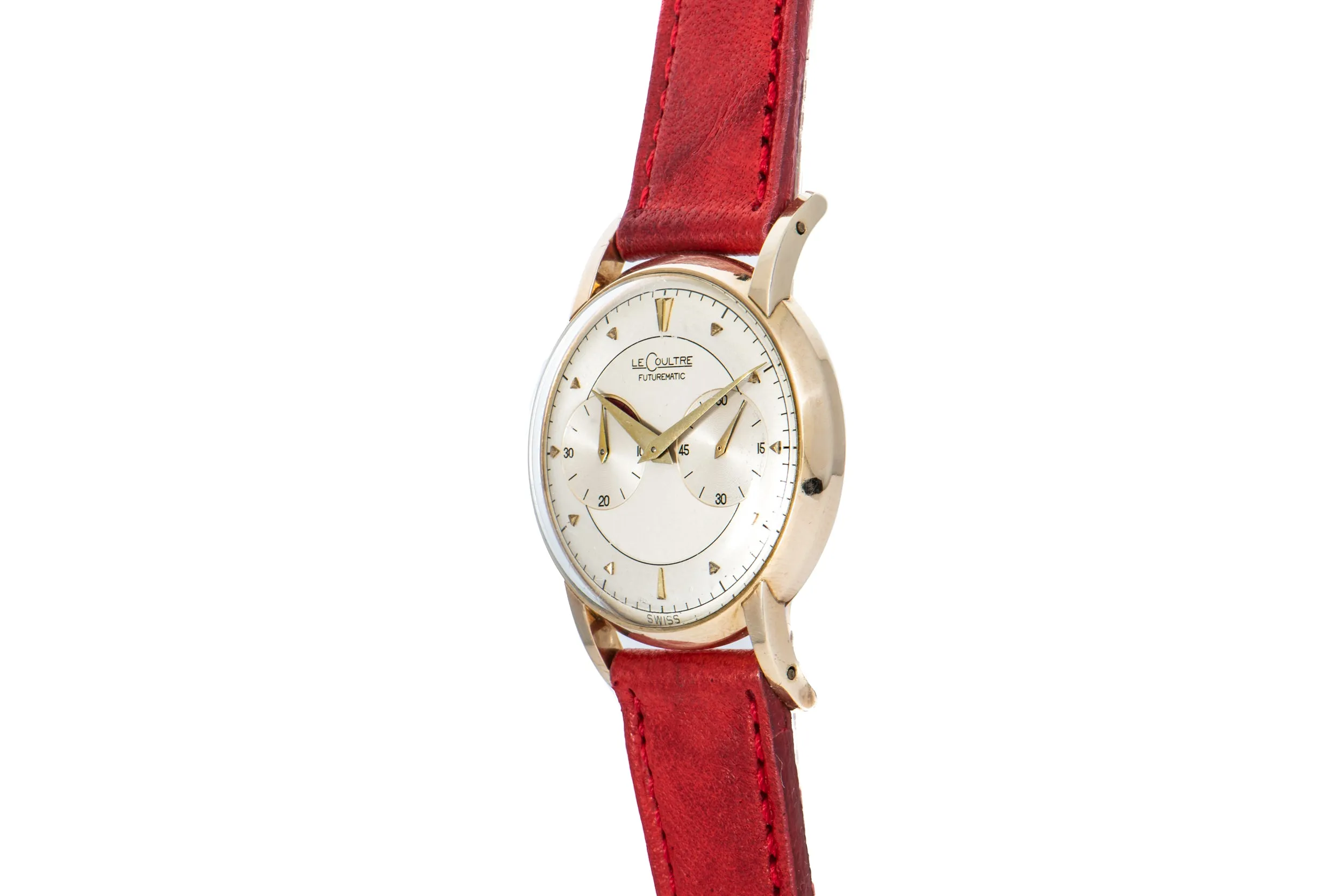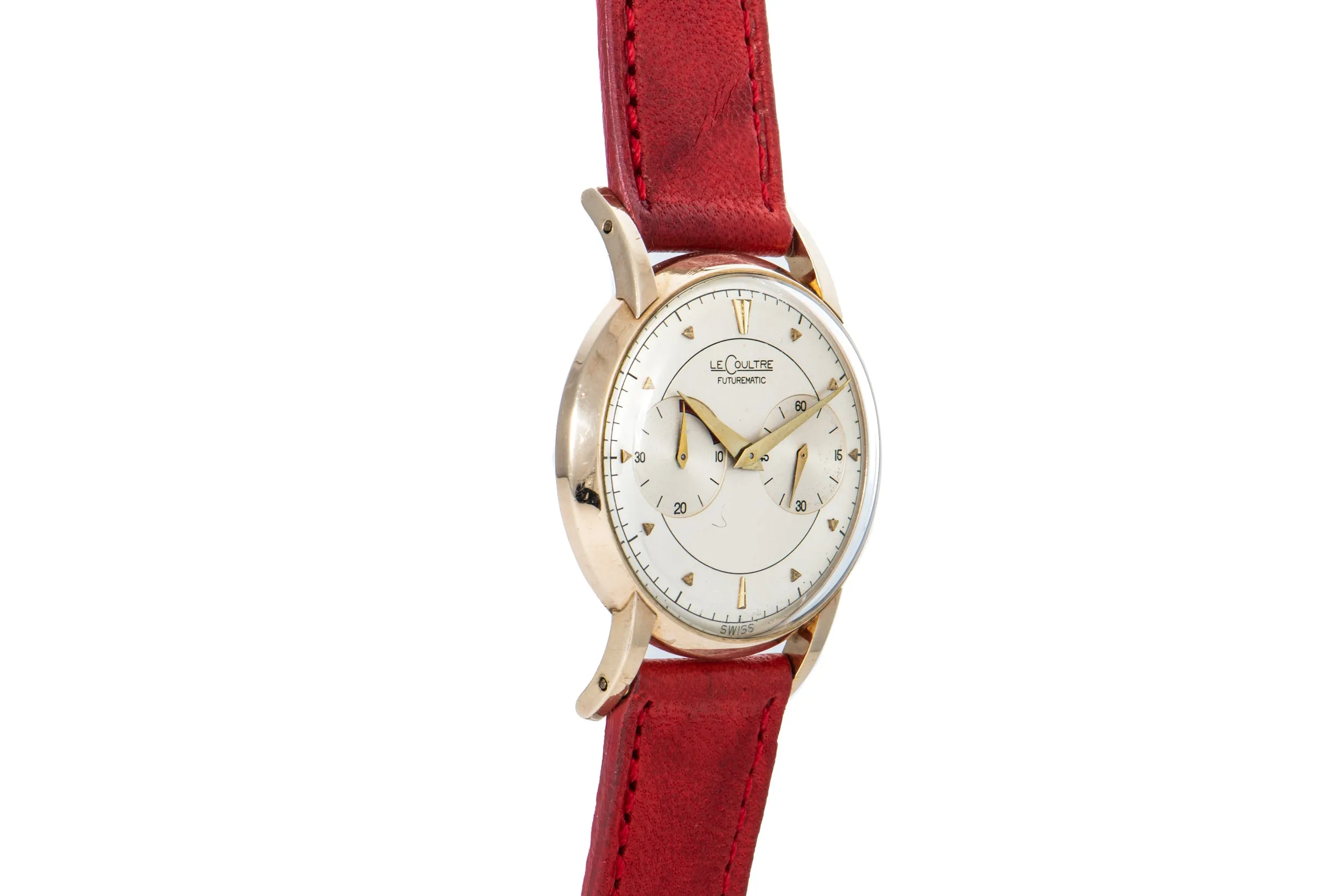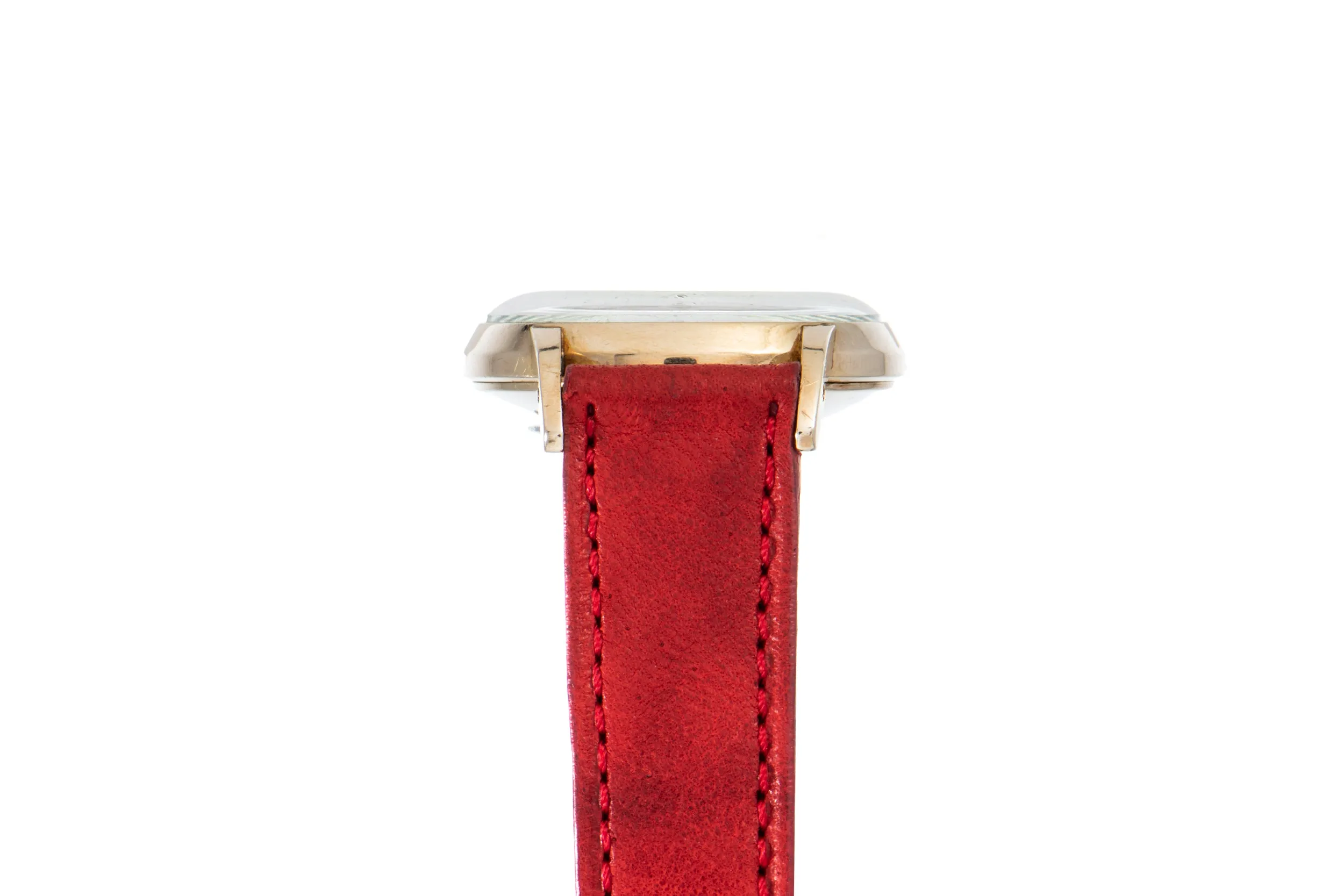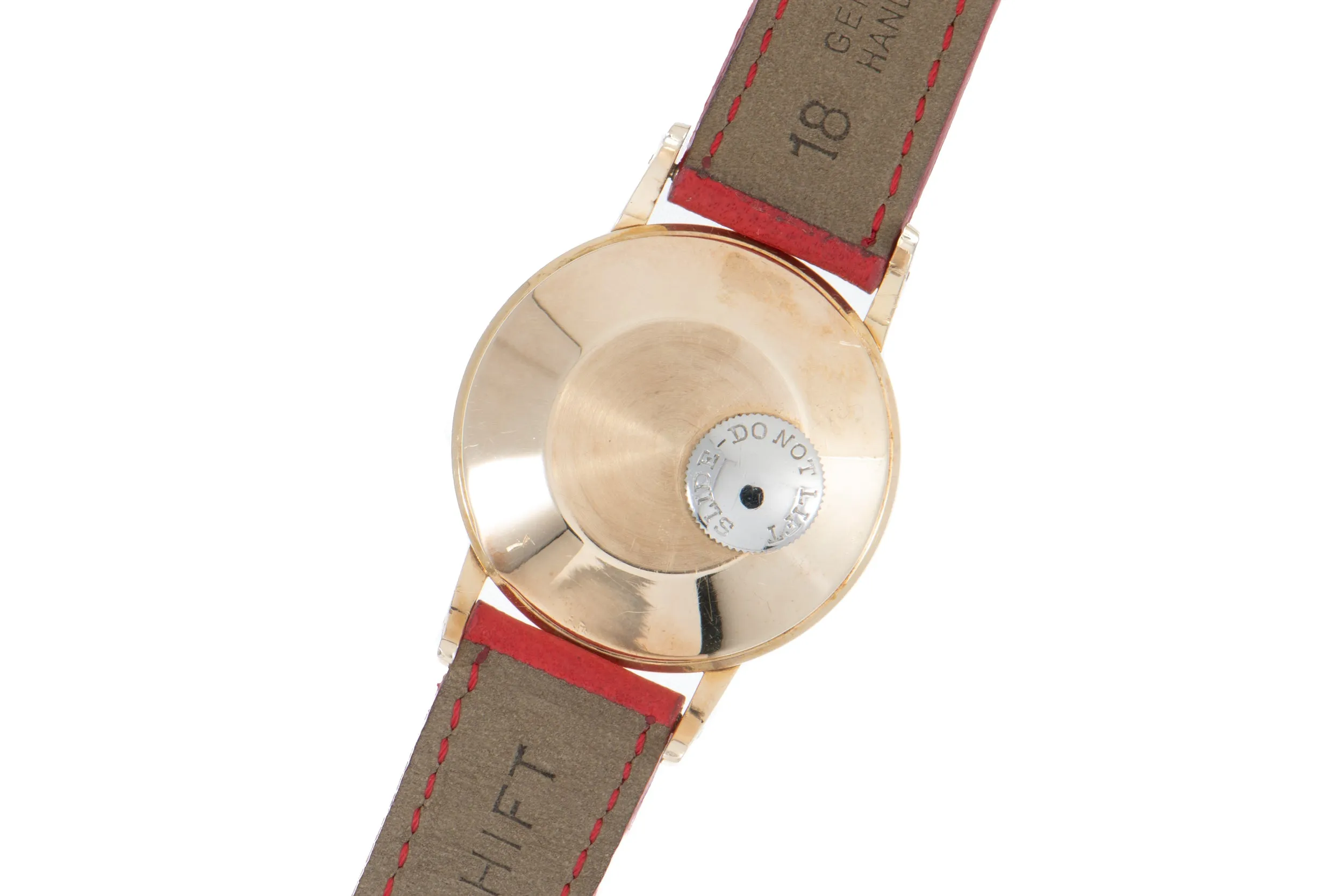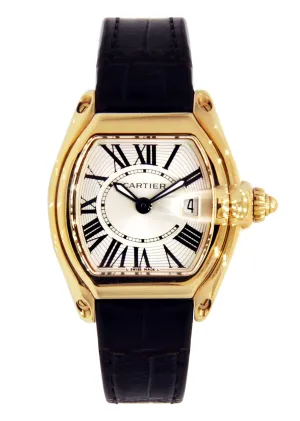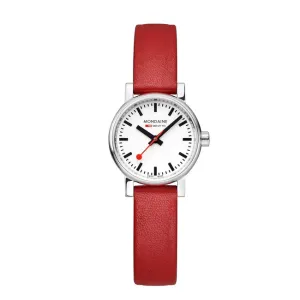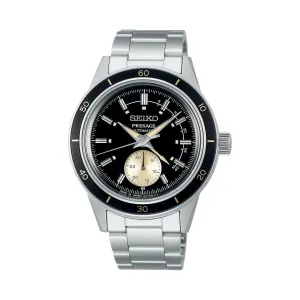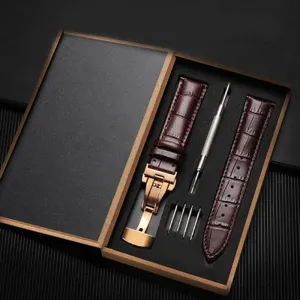Compared to Blancpain and Rolex, JLC came late to producing automatic movements.
The Calibre 476 arrived in 1946, twenty years after Blancpain debuted their first automatic, and fifteen after Rolex did the same. However, while Blancpain's and Rolex's movements had low power reserves, JLC's Calibre 476 had a power reserve of 40 hours; additionally, the movement was accurate enough to achieve chronometer certification twelve years after its introduction.
In 1953, JLC broke the mold — both literally and figuratively — with the Futurematic. After the devastation wrought during six years of total war, the world turned its eyes to the future. Manufacturers both horological and otherwise designed products in innovative shapes and colors that aesthetically embodied the future the world aspired to.
The Futurematic was powered by the Calibre 497, which, thanks to its larger balance, was even more accurate than the Calibre 476. Like many early automatic movements produced by Universal Genève, for example, the Calibre 497 was a bumper wind movement. But in the Calibre 497, the oscillating weight was locked into place by a little hook, preventing it from overwinding and breaking the mainspring, which was a problem that plagued many early automatic calibers.
The Calibre 497 is also notable for its hacking mechanism. A feature of many military watches that JLC carried over into the construction of this watch, the hacking mechanism — which was unusual in automatic watches of the time — allowed for unparalleled accuracy. JLC also included a revolutionary six-hour power reserve (indicated by the sub-dial at 9:00) that stops the movement from running when there's six hours of power left.
Perhaps the most noticeable design quirk is the lack of a conventional crown at 3:00. With the Calibre 497, JLC created a unique hand-setting wheel that is engaged by sliding — not lifting — the coin-shaped crown on the back of the case inward toward the center of the watch, which also engages the hack lever. To set the hands, the wearer simply rotates the crown clockwise; to get the hands going again, one slides the crown toward the outside of the case.
This particular Futurematic from the late 1950s is housed in a 35mm gold-filled case with long, straight lugs, an acrylic crystal, and the distinctive Futurematic sliding crown on the caseback. It features a multi-tone silver dial with applied indices and a matching ‘dauphine’ handset, a power reserve indicator at 9:00, and a running seconds indicator at 3:00 - both of which possess radial finishing. Of course, it’s powered by the famed Calibre 497 movement from Universal Genève.
With distinctive looks and an innovative construction, the Futurematic is emblematic of an era, a classic of mid-century horology that deserves appreciation.

